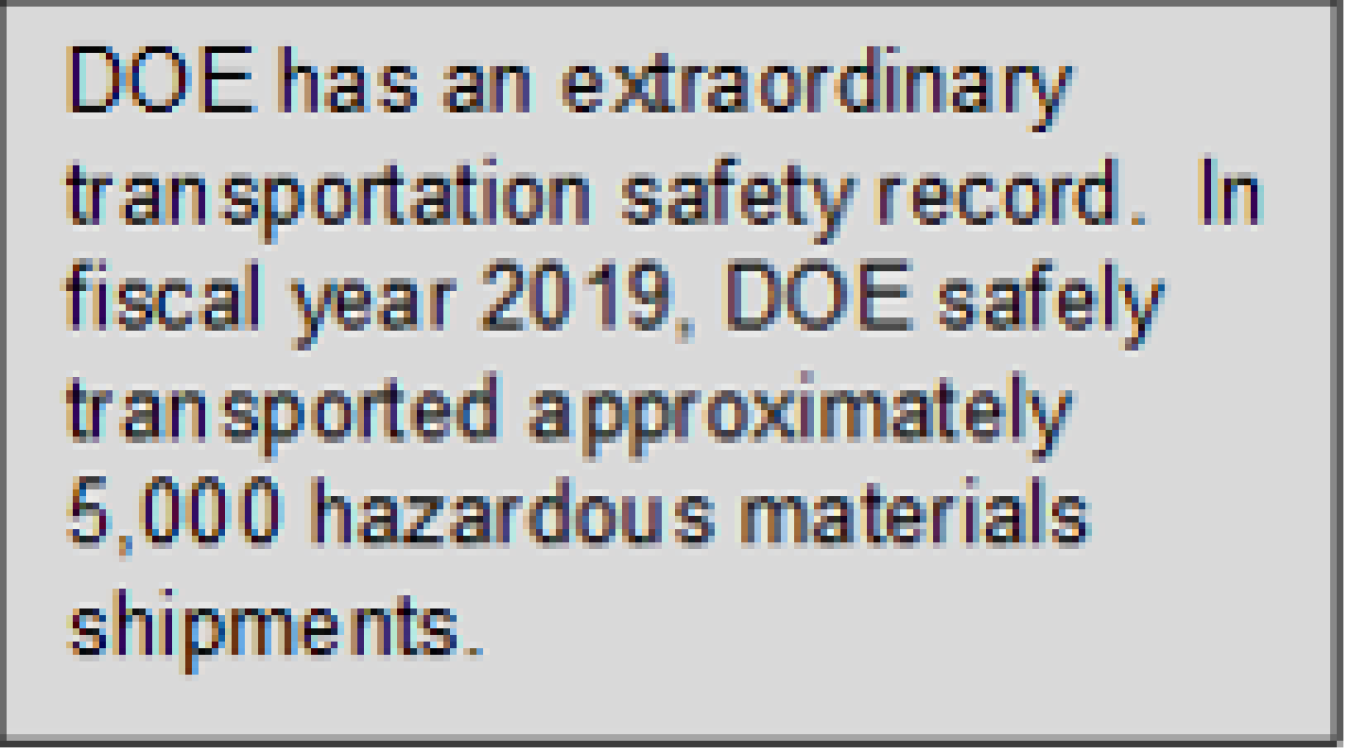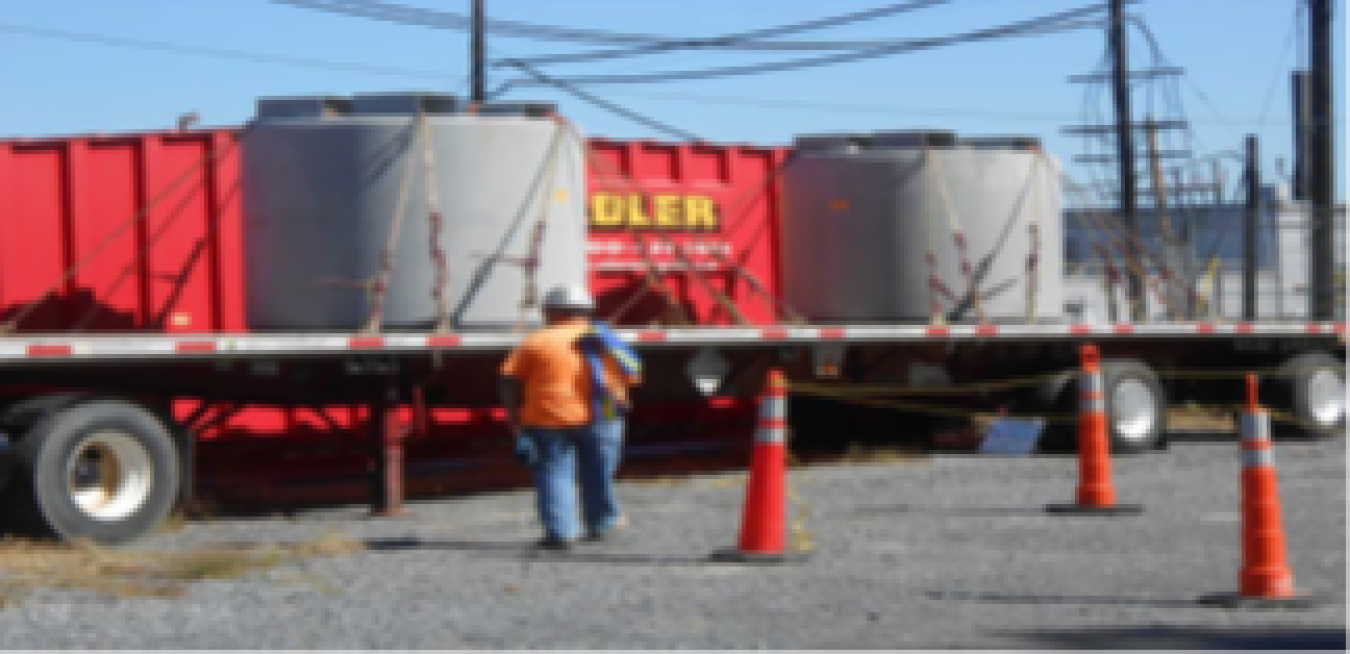Waste shipments to commercial treatment and/or disposal facilities are made according to rigorous federal regulations issued by the DOT & the NRC.
Office of Environmental Management
August 5, 2020Packaging and Transportation

The shipping of radioactive materials and waste is strictly regulated. The DOT regulates shipments while they are in transit and sets standards for packaging, labeling, preparation of shipping papers, handling, marking, and placarding of shipments (49 CFR Subpart I – Class 7 (Radioactive) Materials).

The NRC establishes additional requirements for the design and manufacture of packages for radioactive materials (10 CFR Part 71 – Packaging and Transport of Radioactive Material). In addition, Department of Energy (DOE) Order 460.1D, Hazardous Materials Packaging and Transportation Safety, establishes safety requirements for the proper packaging and transportation of hazardous and radioactive materials. Special packaging is required for radioactive materials (Figures 1 and 2). The packaging is tested to ensure it will keep people safe if there is an incident. Drivers who transport radioactive material are trained in basic radiation science and in radiation emergency safety. Safety and training practices ensure the materials and packages are handled properly so that they cannot harm workers, the public or the environment.

Annually, about three million radioactive materials packages are shipped in the United States by highway, rail, air, and water. DOE successfully completes thousands of shipments each year. The shipments have included a variety of waste types, such as transuranic waste, low-level radioactive waste, mixed low-level radioactive waste and used nuclear fuel, primarily by highway and rail. All DOE shipments are conducted in accordance with well established, rigorous federal regulations issued by DOT and the NRC. Further, DOE requires use of commercial motor transporters who have been evaluated by DOE for their safety performance and compliance with federal regulations.

DOE’s transportation program works closely with State, Tribal and local jurisdictions. For example, the National Transportation Stakeholders Forum engages at the national level with these stakeholders about DOE’s shipments of radioactive materials and waste. DOE’s Transportation and Emergency Preparedness Program conducts extensive emergency preparedness with State, Tribal, and local emergency responders to ensure they have the necessary training and tools to respond to any transportation accidents involving DOE-owned radioactive materials.

